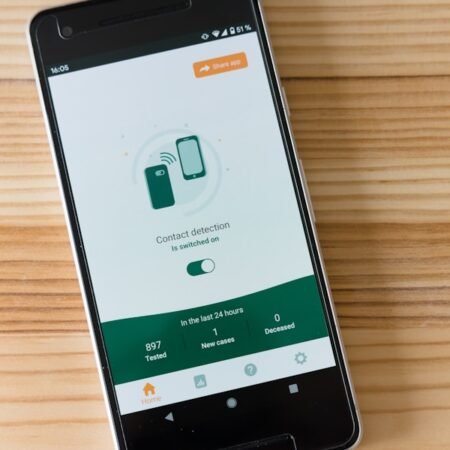The portability of travel cribs is a significant advantage when considering their use as a permanent bed for babies. Designed to be lightweight and easy to transport, travel cribs are ideal for families who frequently travel or move around. They provide a safe and familiar sleeping environment for babies, whether visiting family and friends, on vacation, or simply moving from room to room in their own home.
This consistency is particularly beneficial for parents who want to maintain a regular bedtime routine for their baby, even when away from home. In addition to their portability, travel cribs offer convenience. Many models are designed for quick and easy setup and takedown, making them a practical choice for busy parents.
Some travel cribs come with carrying cases or backpacks, further enhancing their transportability. This convenience is a significant selling point for parents seeking a hassle-free sleeping solution for their baby. However, some parents may find that the benefits of portability and convenience are outweighed by the drawbacks.
Travel cribs, while designed to be lightweight and easy to transport, may not provide the same level of comfort and support as traditional cribs or bassinets. Additionally, the process of setting up and taking down a travel crib may be more trouble than it’s worth, especially if used as a permanent bed. Ultimately, the decision to use a travel crib as a permanent bed depends on individual parental needs and preferences.
Key Takeaways
- Portability and convenience make travel cribs a great option for families on the go
- Safety and comfort are important factors to consider when using a travel crib as a permanent bed
- While cost-effective initially, the limited long-term use may not make it the best investment
- Transitioning to a regular bed can be a challenge after using a travel crib for an extended period
- Storage and space may be a concern when using a travel crib as a permanent bed option
Safety and Comfort
Safety Features of Travel Cribs
Travel cribs are designed with safety in mind, featuring sturdy frames, breathable mesh sides, and secure locking mechanisms to keep your baby safe while they sleep. Many models also come with built-in mattresses that provide a comfortable sleeping surface for your little one. This can provide peace of mind for parents who want to ensure that their baby is sleeping in a safe and secure environment, whether they’re at home or on the go.
Comfort and Customization
In addition to safety, travel cribs can also offer a comfortable sleeping environment for your baby. Many models come with adjustable mattress heights, allowing you to customize the sleeping surface to suit your baby’s needs. Some travel cribs also come with additional features such as built-in mobiles or soothing vibrations, which can help to create a calming and relaxing environment for your little one.
Important Considerations
However, it’s important to note that not all travel cribs are created equal when it comes to safety and comfort. Some models may not meet the same safety standards as traditional cribs or bassinets, which could pose a risk to your baby. Additionally, the mattresses that come with travel cribs may not offer the same level of support and comfort as those found in traditional cribs. As a result, some parents may find that using a travel crib as a permanent bed is not the best option for their baby‘s safety and comfort.
Cost-effectiveness
Another factor to consider when deciding whether to use a travel crib as a permanent bed for your baby is cost-effectiveness. Travel cribs are often more affordable than traditional cribs or bassinets, making them an attractive option for budget-conscious parents. In addition to being affordable, travel cribs are also designed to be durable and long-lasting, which means that they can provide excellent value for money over time.
This can be especially appealing for parents who want to invest in a sleeping solution that will grow with their baby. Furthermore, the portability of travel cribs can also make them cost-effective in the long run. By using a travel crib as a permanent bed for your baby, you can avoid the need to purchase multiple sleeping solutions for different environments.
This can save you money on additional cribs or bassinets, as well as on bedding and accessories for each one. Ultimately, using a travel crib as a permanent bed can be a practical and cost-effective choice for many families. However, it’s important to consider the potential drawbacks of using a travel crib as a permanent bed from a cost perspective.
While travel cribs may be more affordable upfront, they may not offer the same level of longevity as traditional cribs or bassinets. As your baby grows, they may outgrow the size or weight limits of the travel crib, which could necessitate the purchase of a new sleeping solution. Additionally, some parents may find that the cost of purchasing additional bedding or accessories for the travel crib outweighs the initial savings.
As a result, it’s important to weigh the long-term costs and benefits of using a travel crib as a permanent bed before making a decision.
Limited Long-term Use
| Pros | Cons |
|---|---|
| Portability | Limited size |
| Easy to assemble | May not be as comfortable as a regular crib |
| Convenient for travel | Not as sturdy as a regular crib |
| Can be used for outdoor activities | May not provide long-term support for baby’s development |
One potential downside of using a travel crib as a permanent bed for your baby is its limited long-term use. While travel cribs are designed to be durable and long-lasting, they may not be suitable for use as your baby grows older. Many models have weight or size limits that could prevent them from being used beyond a certain age or stage of development.
This means that you may need to purchase an additional sleeping solution for your baby as they outgrow the travel crib, which could add to the overall cost of providing a safe and comfortable sleeping environment for your little one. Additionally, some parents may find that using a travel crib as a permanent bed limits their options when it comes to creating a nurturing and stimulating sleeping environment for their baby. Traditional cribs or bassinets often come with additional features such as adjustable mattress heights, convertible designs, and coordinating furniture sets that can help to create a cohesive and inviting nursery space for your little one.
By contrast, travel cribs may not offer the same level of versatility or customization when it comes to creating a comfortable and aesthetically pleasing sleeping environment for your baby. On the other hand, some parents may find that the limited long-term use of a travel crib is not necessarily a drawback. If you plan to transition your baby to a regular bed at an early age, using a travel crib as a permanent bed could be a practical and cost-effective choice.
Additionally, some parents may find that the portability and convenience of a travel crib outweigh the potential limitations in long-term use. Ultimately, the decision to use a travel crib as a permanent bed will depend on your individual needs and preferences as a parent.
Transitioning to a Regular Bed
Another consideration when deciding whether to use a travel crib as a permanent bed for your baby is the transition to a regular bed. Many parents choose to transition their baby from a crib or bassinet to a regular bed at some point during early childhood. This transition can be an important milestone for both you and your little one, as it marks their growing independence and maturity.
However, using a travel crib as a permanent bed could potentially complicate this transition process. One potential drawback of using a travel crib as a permanent bed is that it may not prepare your baby for the eventual transition to a regular bed. Traditional cribs or bassinets often come with adjustable mattress heights and convertible designs that can help to ease this transition by providing familiar and comfortable sleeping environments for your little one as they grow older.
By contrast, travel cribs may not offer the same level of support or preparation for this important milestone. Additionally, some parents may find that using a travel crib as a permanent bed makes it more difficult to establish consistent bedtime routines and sleep habits for their baby. Traditional cribs or bassinets often come with coordinating furniture sets and accessories that can help to create an inviting and nurturing sleeping environment for your little one.
By contrast, travel cribs may not offer the same level of versatility or customization when it comes to creating an ideal sleep space for your baby. However, it’s important to note that transitioning from a travel crib to a regular bed is not necessarily an insurmountable challenge. With careful planning and preparation, many parents find that this transition can be smooth and successful, regardless of the type of sleeping solution they choose for their baby in early childhood.
Ultimately, the decision to use a travel crib as a permanent bed will depend on your individual needs and preferences as a parent.
Storage and Space
When considering using a travel crib as a permanent bed, there are several practical factors to take into account.
Storage and Space Considerations
Traditional cribs or bassinets often come with coordinating furniture sets and accessories that can help create an inviting and nurturing nursery space for your little one. In contrast, travel cribs may not offer the same level of versatility or customization when it comes to creating an ideal sleep space for your baby.
Establishing Consistent Bedtime Routines
Some parents may find that using a travel crib as a permanent bed makes it more difficult to establish consistent bedtime routines and sleep habits for their baby. Traditional cribs or bassinets often come with coordinating furniture sets and accessories that can help create an inviting and nurturing sleeping environment for your little one. In contrast, travel cribs may not offer the same level of versatility or customization when it comes to creating an ideal sleep space for your baby.
Transitioning to a Regular Bed
However, it’s important to note that transitioning from a travel crib to a regular bed is not necessarily an insurmountable challenge. With careful planning and preparation, many parents find that this transition can be smooth and successful, regardless of the type of sleeping solution they choose for their baby in early childhood. Ultimately, the decision to use a travel crib as a permanent bed will depend on your individual needs and preferences as a parent.
Travel Crib Alternatives
If you’re considering using a travel crib as a permanent bed for your baby but have concerns about its limitations, there are several alternatives that you may want to consider. Traditional cribs or bassinets often come with adjustable mattress heights, convertible designs, and coordinating furniture sets that can help to create an inviting and nurturing nursery space for your little one. Additionally, some parents may find that using a travel crib as a permanent bed makes it more difficult to establish consistent bedtime routines and sleep habits for their baby.
Traditional cribs or bassinets often come with coordinating furniture sets and accessories that can help to create an inviting and nurturing sleeping environment for your little one. By contrast, travel cribs may not offer the same level of versatility or customization when it comes to creating an ideal sleep space for your baby. However, it’s important to note that transitioning from a travel crib to a regular bed is not necessarily an insurmountable challenge.
With careful planning and preparation, many parents find that this transition can be smooth and successful, regardless of the type of sleeping solution they choose for their baby in early childhood. Ultimately, the decision to use a travel crib as a permanent bed will depend on your individual needs and preferences as a parent. In conclusion, there are several factors to consider when deciding whether to use a travel crib as a permanent bed for your baby.
The portability and convenience of travel cribs can make them an attractive option for families who are constantly on the go, while their safety features and comfortable sleeping surfaces provide peace of mind for parents who want to ensure that their little one is sleeping in a secure environment. Additionally, the cost-effectiveness of travel cribs can make them an appealing choice for budget-conscious parents who want to invest in a durable and long-lasting sleeping solution. However, there are also potential drawbacks to using a travel crib as a permanent bed, including its limited long-term use and potential challenges when transitioning to a regular bed.
Ultimately, the decision will depend on your individual needs and preferences as well as those of your baby. If you have concerns about using a travel crib as a permanent bed but still want the convenience of portability, there are several alternatives available that may better suit your needs. In conclusion, there are several factors to consider when deciding whether to use a travel crib as a permanent bed for your baby.
The portability and convenience of travel cribs can make them an attractive option for families who are constantly on the go, while their safety features and comfortable sleeping surfaces provide peace of mind for parents who want to ensure that their little one is sleeping in a secure environment. Additionally, the cost-effectiveness of travel cribs can make them an appealing choice for budget-conscious parents who want to invest in durable and long-lasting sleeping solutions. However, there are also potential drawbacks to using a travel crib as a permanent bed, including its limited long-term use and potential challenges when transitioning to regular beds.
Ultimately, the decision will depend on your individual needs and preferences as well as those of your baby. If you have concerns about using a travel crib as permanent beds but still want the convenience of portability, there are several alternatives available that may better suit your needs.
For example, a portable bassinet or a co-sleeper may be a better option for some families. These options provide a safe and comfortable sleeping space for your baby while still being easy to transport. Additionally, some parents choose to use a pack ‘n play with a bassinet attachment as a more long-term sleeping solution. It’s important to carefully consider your specific situation and weigh the pros and cons of each option before making a decision. Consulting with your pediatrician or a sleep specialist can also provide valuable insight and guidance in choosing the best sleeping arrangement for your baby.
FAQs
What is a travel crib?
A travel crib is a portable, lightweight crib designed for use during travel or on-the-go situations. It is typically smaller and more easily collapsible than a traditional crib.
Can a travel crib be used as a permanent bed for a baby?
Yes, a travel crib can be used as a permanent bed for a baby, but there are pros and cons to consider before making this decision.
What are the pros of using a travel crib as a permanent bed for a baby?
– Portability: Travel cribs are easy to move from room to room or to take on trips. – Space-saving: They are smaller than traditional cribs, making them ideal for small living spaces. – Versatility: Some travel cribs can be used as playpens or bassinets, providing multiple functions in one piece of equipment.
What are the cons of using a travel crib as a permanent bed for a baby?
– Comfort: Some travel cribs may not provide the same level of comfort and support as a traditional crib mattress. – Long-term durability: Travel cribs may not hold up as well over time with daily use compared to traditional cribs. – Safety concerns: Some travel cribs may not meet the same safety standards as traditional cribs, so it’s important to research and choose a reputable brand.
What should I consider before using a travel crib as a permanent bed for my baby?
Before using a travel crib as a permanent bed, consider the comfort, safety, and long-term durability of the crib. It’s also important to ensure that the crib meets safety standards and guidelines for infant sleep.
































